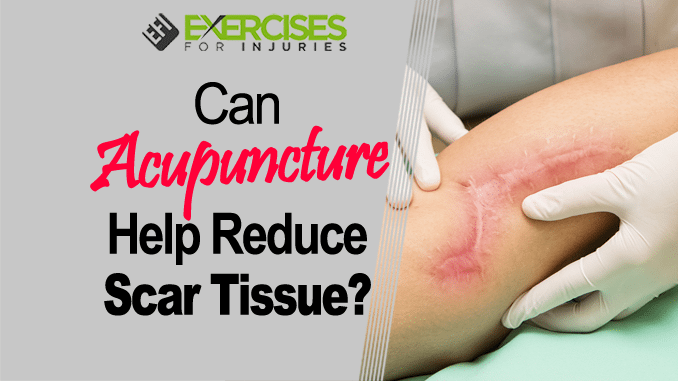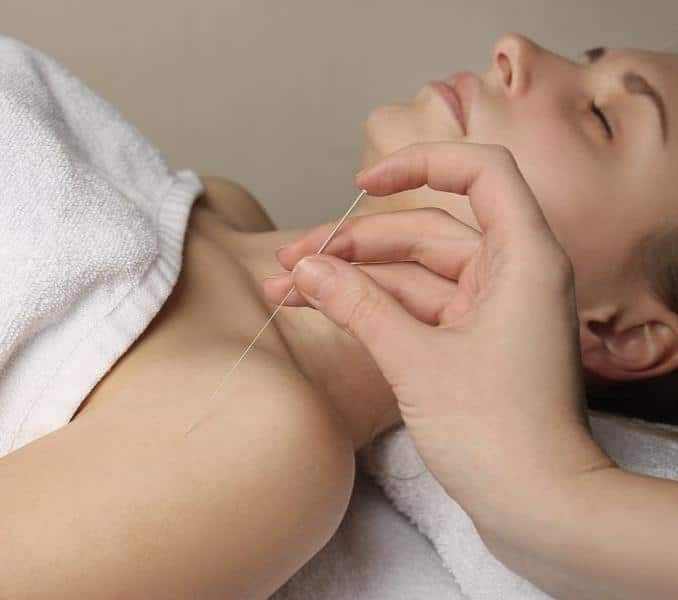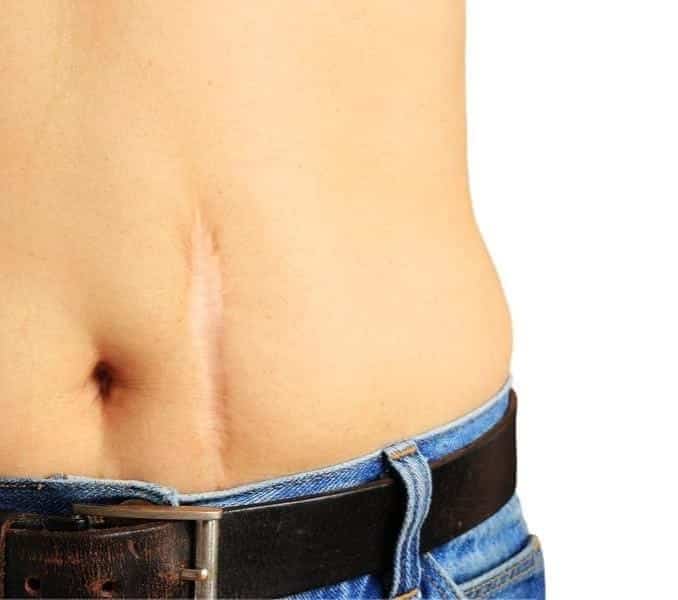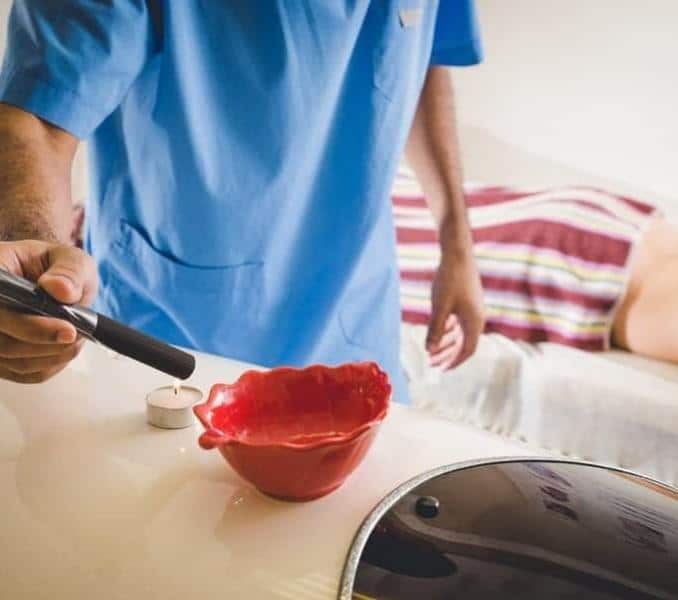
Many people have been looking at acupuncture therapy for help in reducing scar tissue. In this post, we’ll look at research, expert reports and patient experiences to determine whether or not acupuncture is an effective treatment to reduce scar tissue. We’ll also explore the possible benefits of acupuncture for managing pain and loss of motion from scar tissue.

What is Scar Tissue?
Scar tissue is a normal bodily response to injury. As the body works to repair an injury, incision or overused joint, it creates scar tissue. After the skin is injured, cut or strained, scar tissue will replace the normal skin tissue.
There are three main layers that make up human skin. The American Academy of Dermatology identifies the three main skin layers as the epidermis, dermis and subcutaneous fat layer. The outermost layer is called the epidermis. It’s like a protective wrap around the surface of the body. The dermis is underneath the epidermis. It’s the layer that holds blood vessels and nerve endings. Then, the subcutaneous fat layer is on the bottom. This layer is where your skin is attached to your muscles and bones. According to health writer Paulla Estes, “When the dermis — the pink middle layer in the cross-section of skin — is injured, the body first responds by making a blood clot in the area to close off the wound. After the blood clots, the body then sends in fibroblasts, a type of cell that helps rebuild skin tissue. These cells break down the clot and start replacing it with proteins — primarily collagen — that make up scar tissue.”
Scars come in all sorts of shapes and sizes. However, there are five types of scars that are most common. Estes outlined the five common types of scars in her recent article about scar tissue. First, the atrophic scar. Atrophic scars appear to be sunken into the surface of the skin. Atrophic scars are often present on the face, after acne or when significant skin is removed during an injury. Another type of scar is a hypertrophic scar. These are reddish or purple scars that are a little puffy and raised. They normally flatten over time. Next, contracture scars are common with burns. They pull the skin toward the site of the injury and generally make the skin look puckered. Keloid scars are another type. Keloid scars are very dark in color, often dark red or purplish. They are substantially raised and puffy. Keloid scars are formed when the body produces unusually large amounts of collagen in response to an injury. Keloid scars can actually be considered a benign type of tumor and can grow larger than the original wound. Stretch marks are the final type of scar. They occur when the skin stretches significantly during a short period of time. Stretch marks often accompany pregnancy or rapid weight gain. Each type of scar comes with scar tissue.
Estes explains, “Though scar tissue is made up the same substance as undamaged skin, it looks different because of the way the fibers in the tissue are arranged.” Estes added, “Scars form every time the skin is damaged beyond its first layer, whether that damage comes from a cut, burn or a skin condition.”
How Can Scar Tissue Cause Problems in the Body?
Can Acupuncture Help Reduce Scar Tissue? Although scar tissue is a good thing that helps repair and rebuilds the body after an injury, it can also cause complications beneath the skin. The connective tissue that creates scars to promote healing can eventually cause pain or tenderness at the site, prohibit fluid movement in joints or muscles and may contribute to an ultimate decline in a general range of motion.
Can Acupuncture Help Reduce Scar Tissue?
Can Acupuncture Help Reduce Scar Tissue? One of the most well-known practices used in traditional Chinese medicine is acupuncture. Acupuncture practitioners stimulate precise points of the body by inserting very thin needles into the skin. Acupuncture has been used for centuries to treat physical and emotional conditions.
We asked Dr. Susie Rosenberger, Doctor of Oriental Medicine (OMD) in Las Vegas to weigh-in on the subject. Dr. Rosenberger has been practicing acupuncture for the past seven years. She sees clients regularly who have problematic scar tissue. Dr. Rosenberger said, “I see most scar tissue from patients who have had back or spine surgeries. A lot of patients don’t respond well to back surgeries. People get scar tissue afterward, and it makes things worse.”
Often, while people who are just looking for pain relief will undergo surgery to remove built-up scar tissue, Dr. Rosenberger suggests that patients try acupuncture first. Dr. Rosenberger says, “So many times, we can use acupuncture in lieu of surgery. My path [acupuncture] is a cost-effective, non-invasive approach that gets to the root of the problem.”
Dr. Rosenberger explained that in Chinese medicine, everything is based on energy. The energy is called “qi” pronounced “chee.” Qi and blood are yin and yang in Chinese medicine. The qi is the energy that moves the blood through the body. Qi flows through 12 major meridians in the human body. The organs within the body send messages to each other through this meridian network. Keeping the meridians clear and flowing is extremely important to the well-being of the body. Dr. Rosenberger and others who are trained properly in Chinese medicine have developed the sensitivity to feel the qi flow through the body.
Dr. Rosenberger shared that one patient came to her with all over body pain. The client had undergone multiple surgeries. Dr. Rosenberger said, “The first thing I did was work on her scar tissue. I surrounded the scar with needles to break up the scar tissue.” Dr. Rosenberger also noted that she often sees patients with scar tissue pain from cesarean section incisions. “Many times, the incision for C-section cuts right through several important vertical meridians from head to toe.” Acupuncture can be an excellent treatment for scars blocking the flow of energy through the vertical meridians.
Research Shows Benefits of Acupuncture for Scar Tissue Reduction
Can Acupuncture Help Reduce Scar Tissue? Plenty of academic research has also been conducted on acupuncture for scar tissue reduction. In 2014, one study was published in the Journal of Acupuncture and Meridian Studies. The study was based on a 48-year-old female subject who was in severe pain from scar tissue. The subject was treated with an acupuncture technique known as “Wei Ci” or “Surrounding the Dragon.” Michael Clifford, L. AC., an acupuncture practitioner in New Mexico, describes the Surrounding the Dragon technique he uses for his patients with scar tissue. “[We] insert needles around the knot and let the needles start to break up the stagnation that is manifesting as a knot.”
During the study, during a period of five weeks, the patient received eight total treatments with the Surrounding the Dragon technique. The pain surrounding her scar tissue reportedly decreased from a 7 to a 1 or 2. (Pain scale with 0 being no pain and 10 being the most pain.)
Clifford related an experience using the same technique with one of his patients who had been in serious pain that resulted in daily headaches: “When I put the needles into her back, she felt an ‘unwinding’ sensation in the area.” Clifford reported that after the treatment the client’s headache was gone and her pain had been reduced from a 9 to a 4. (Same 0 to 10 pain scale). This technique was performed on just her first visit.
The Use of Moxibustion Therapy
Can Acupuncture Help Reduce Scar Tissue? In addition to the Surround the Dragon technique, many acupuncture practitioners use a traditional Chinese therapy called “moxibustion.” The term moxibustion comes from the Japanese words “mogusa” and “bustion.” Mogusa means herb — and the herb used in moxibustion is mugwort. Bustion means burning. Dr. Rosenberger actually demonstrated how she uses moxibustion therapy (moxa for short) with her patients. She showed us a rod of moxa, made from mugwort. Dr. Rosenberger said she burns the moxa rod and holds it very close to the patient’s skin to promote blood flow. She said another way to use moxa is to burn the rod on top of one of the acupuncture needles. Both ways are beneficial when used in the treatment of pain associated with scar tissue.
Katrina Hanson, of Prism Integrative Acupuncture, in Oakland, California, concurs with Dr. Rosenberger and Mr. Clifford. She says, “Such treatments [moxa and Surrounds the Dragon] can not only reduce scar pain but also help to break up scar tissue and adhesions, increase local circulation and aid healing. This leads to flatter, smaller and less noticeable scars and a reduction of keloiding.”
Conclusion
Scar tissue, it’s appearance, the pain and loss of mobility that often accompanies it can be a significant and bothersome problem. The healing response our body sends to protect and replenish our skin barrier after an injury can be the very thing that ultimately causes us pain. In considering treatment for reduction of scar tissue or pain associated with scar tissue, consider acupuncture first over surgical removal or other invasive treatments.
For your guide to the best foods to heal your body, check out The Best Foods that Rapidly Slim & Heal in 7 Days, here!





